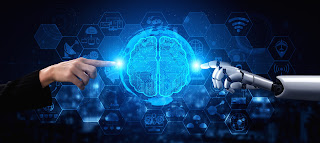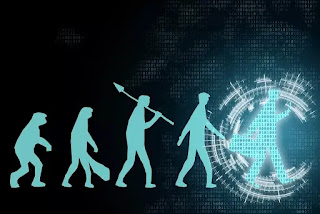Demystifying AI: Understanding the Basics and Real-world Applications
1. Introduction to AI
- Definition and significance
- Historical background
2. Types of AI
- Narrow AI
- General AI
- Superintelligent AI
3. Understanding Machine Learning
- Supervised learning
- Unsupervised learning
- Reinforcement learning
4. Deep Learning Explained
- Neural networks
- Convolutional neural networks
- Recurrent neural networks
5. AI in Healthcare
- Disease diagnosis
- Personalized treatment plans
- Drug discovery
6. AI in Finance
- Fraud detection
- Algorithmic trading
- Customer service
7. AI in Transportation
- Autonomous vehicles
- Traffic management
- Predictive maintenance
8. AI in Entertainment
- Content recommendation
- Virtual assistants
- Creative content generation
9. Ethical Considerations in AI
- Bias and fairness
- Privacy concerns
- Job displacement
10. The Future of AI
- Advancements and possibilities
- Potential challenges
11. Conclusion
12. FAQ Section
- What is the difference between AI and machine learning?
- How is AI transforming industries?
- Are there any ethical concerns with AI?
- Will AI replace human jobs?
- What are some future developments in AI?
Introduction to AI
Artificial Intelligence (AI) has become a buzzword in today's technology-driven world. It refers to the simulation of human intelligence in machines that are programmed to think and learn like humans. The concept of AI dates back to ancient times, but it wasn't until the mid-20th century that significant strides were made in its development.
Types of AI
AI can be categorized into three main types: Narrow AI, General AI, and Superintelligent AI. Narrow AI, also known as weak AI, is designed for a specific task, such as virtual assistants like Siri or Alexa. General AI, on the other hand, would possess the ability to understand, learn, and apply knowledge across different domains, akin to human intelligence. Superintelligent AI goes beyond human intelligence and is hypothetical at this stage.
Understanding Machine Learning
Machine Learning is a subset of AI that enables machines to learn from data without being explicitly programmed. There are three main types of machine learning: Supervised learning, Unsupervised learning, and Reinforcement learning. Supervised learning involves training a model on labeled data, while unsupervised learning involves finding patterns in unlabeled data. Reinforcement learning is about training models to make decisions based on trial and error.
Deep Learning Explained
Deep Learning is a specialized form of machine learning that uses artificial neural networks to model and understand complex patterns in data. Neural networks, inspired by the structure of the human brain, consist of interconnected nodes organized in layers. Convolutional neural networks (CNNs) are commonly used in image recognition tasks, while recurrent neural networks (RNNs) are suitable for sequence data.
AI in Healthcare
AI is revolutionizing the healthcare industry by improving diagnosis, treatment, and patient care. It enables early disease detection through analyzing medical images and patient data. Personalized treatment plans can be created by analyzing a patient's genetic makeup and medical history. AI also plays a crucial role in drug discovery by identifying potential drug candidates more efficiently.
AI in Finance
In the finance sector, AI is utilized for various purposes, including fraud detection, algorithmic trading, and customer service. AI algorithms can analyze vast amounts of financial data to detect fraudulent activities in real-time. Algorithmic trading relies on AI to make rapid and accurate trading decisions based on market trends and patterns. Customer service chatbots powered by AI provide personalized assistance to users and streamline communication processes.
AI in Transportation
Transportation is another sector benefiting from AI advancements, particularly with the development of autonomous vehicles. AI-powered systems enable vehicles to navigate roads safely and efficiently, reducing accidents and traffic congestion. Additionally, AI is used for traffic management, predicting traffic patterns, and optimizing transportation routes. Predictive maintenance powered by AI helps prevent vehicle breakdowns by detecting potential issues before they escalate.
AI in Entertainment
Entertainment industry leverage AI for content recommendation, virtual assistants, and creative content generation. Streaming platforms use AI algorithms to recommend personalized content based on users' viewing history and preferences. Virtual assistants like chatbots provide interactive experiences for users, enhancing customer engagement. AI-driven tools assist in creating music, art, and other creative content, pushing the boundaries of human creativity.
Ethical Considerations in AI
While AI offers numerous benefits, it also raises ethical concerns regarding bias, privacy, and job displacement. AI algorithms can inherit biases present in training data, leading to unfair treatment of certain groups. Privacy concerns arise from the collection and analysis of sensitive personal data without consent. The automation of tasks through AI can also result in job loss or displacement, requiring careful consideration of societal impacts.
The Future of AI
The future of AI holds immense promise, with ongoing advancements and possibilities. From healthcare to transportation to entertainment, AI will continue to transform industries and improve human lives. However, it's essential to address potential challenges such as ethical dilemmas, regulatory issues, and the need for responsible AI development.
Conclusion
In conclusion, AI is a powerful technology with diverse applications across various industries. By understanding the basics of AI and its real-world applications, we can harness its potential to drive innovation and solve complex problems. However, it's crucial to approach AI development and deployment with ethics and responsibility to ensure its benefits are realized equitably.
FAQ Section
1. What is the difference between AI and machine learning?
AI is the broader concept of machines being able to carry out tasks in a way that we would consider "smart," whereas machine learning is a subset of AI that focuses on the development of algorithms to allow computers to learn and make decisions based on data.
2. How is AI transforming industries?
AI is transforming industries by automating processes, optimizing operations, and enabling the development of innovative products and services that were previously unimaginable.
3. Are there any ethical concerns with AI?
Yes, ethical concerns with AI include bias in algorithms, invasion of privacy, job displacement, and the potential for misuse of AI technologies.
4. Will AI replace human jobs?
While AI may automate certain tasks, it is more likely to augment human capabilities rather than replace jobs entirely. However, certain roles may become obsolete or evolve over time due to advancements in AI.
5. What are some future developments in AI?
Future developments in AI include advancements in natural language processing, reinforcement learning, autonomous systems, and the integration of AI with other emerging technologies such as blockchain and the Internet of Things (IoT).
.jpeg)





.jpeg)



Comments
Post a Comment